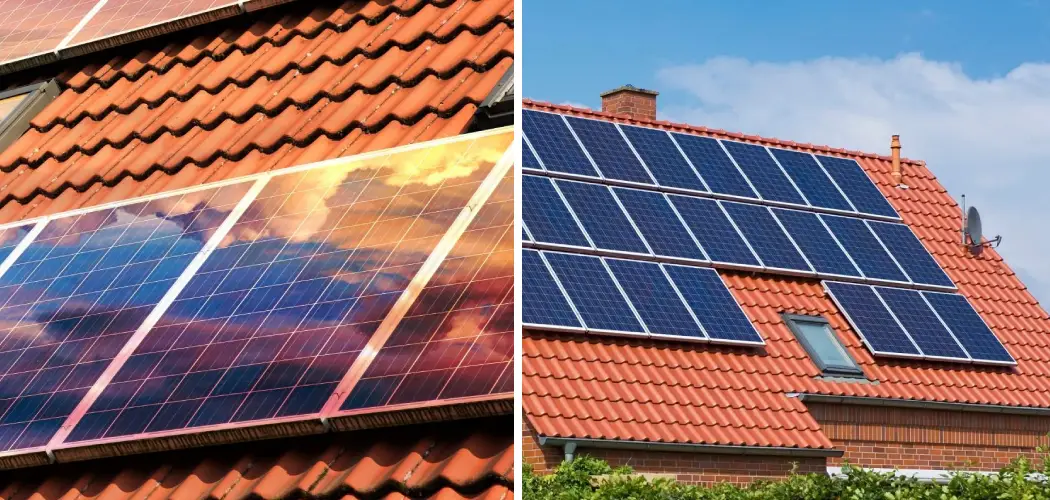Are you looking for ways to dispose of solar lights after they’ve outlived their usefulness? Are you considering donating them, recycling or discarding them altogether? If so, then this blog post is for you!
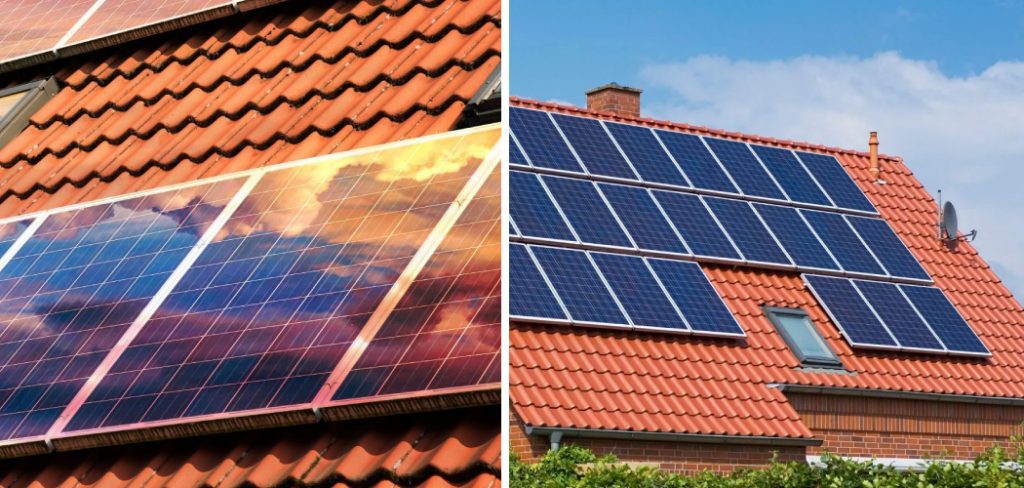
We will help walk you through some easy and eco-friendly disposal methods on how to dispose of solar lights that can help keep the environment safe while also ensuring your solar lights don’t wind up in a landfill. Read on to find out how to give your old solar lights a new life!
Needed Tools and Materials
Given below are the tools and materials that you will need to dispose of your solar lights efficiently:
- Pliers
- Screwdrivers
- Wire Cutters
- Scissors
- Cleaning Supplies (Optional)
After gathering these tools, let’s get started on how to dispose of your solar lights safely and properly.
11 Step-by-step Guidelines on How to Dispose of Solar Lights
Step 1: Remove the Solar Light from its Mounting
The first step is to remove the solar light from its mounting. Most solar lights have a stake or screws that hold them in place, so use a screwdriver or pliers to unscrew or detach the lights. It’s essential to do this carefully so that you don’t damage the light or its components. If the light is still functioning, you can also turn it off before removing it. But if it’s not working, then there is no need for this step. You can proceed to the next step.
Step 2: Clean the Solar Light
Before disposing of your solar lights, it’s best to give them a good cleaning. Use a mild cleaner and water to remove any dirt, grime, or debris from the lights’ surface. This step is especially crucial if you plan on donating or recycling the solar lights. But even if you’re discarding them, cleaning ensures that any recyclable components are still in good condition. This way, they can be easily separated and recycled.

Step 3: Remove the Battery
Once your solar light is clean, remove the batteries. These batteries are typically rechargeable, making them hazardous waste and not safe to dispose of with regular household waste. Contact your local recycling center for proper disposal instructions or see if they have a battery recycling program in place.
You can also opt to reuse the batteries for other purposes, like powering small electronics or toys. But if they are damaged or no longer functional, then it’s best to recycle or dispose of them properly.
Step 4: Remove the Solar Panel
After taking out the batteries, remove the solar panel from the light carefully. As with other electronic devices, it’s essential to recycle solar panels correctly. Consider contacting your local waste management facility or check for any recycling programs available in your area.
It’s best to recycle solar panels because they are made up of valuable materials like silicon, glass, copper, and aluminum that can be reused. You can also reach out to the solar light manufacturer for proper disposal instructions.
Step 5: Take Apart the Light’s Components
With the solar panel and battery removed, take apart the rest of the light’s components. Separate any plastic, glass, or metal parts that can be recycled. In some cases, you might also be able to reuse certain components for your other DIY projects. It’s always best to check for any potential reuse before recycling. It helps reduce waste and promote a more circular economy.
Step 6: Check For Hazardous Materials
Before disposing of your solar lights’ remaining components, check for any hazardous materials that need to be disposed of separately. Some solar lights may contain lead or other toxic materials that require special handling.
In such cases, it’s best to contact your local waste management facility for proper disposal instructions. However, most solar lights are made with recyclable materials that can be disposed of easily.
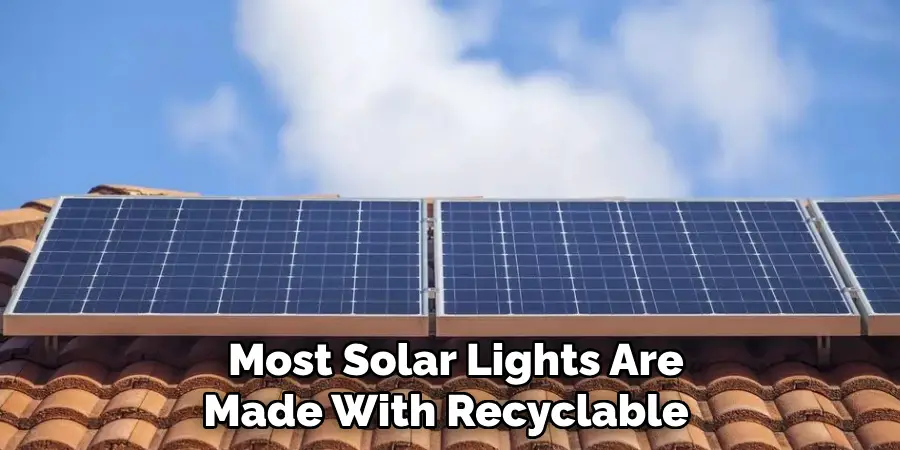
Step 7: Discard Non-Recyclable Materials
After removing and recycling all the components possible, discard any non-recyclable materials. This might include plastic or rubber parts that cannot be recycled or reused. If you are unsure whether a material is recyclable or hazardous, it’s best to consult your local waste management facility for guidance.
It’s always best to err on the side of caution when it comes to proper waste disposal. However, if you have any doubts about whether a material can be recycled, it’s best to discard it separately.
Step 8: Donate the Lights
If your solar lights are still in good condition, consider donating them instead of throwing them away. Many organizations and charities accept working solar lights for use in various projects and communities with limited access to electricity. But before donating, make sure to clean and check the lights’ functionality.
If they are no longer working, then it’s best to recycle or dispose of them properly. It’s always better to donate working lights that can make a difference rather than discarding them.
Step 9: Recycle the Solar Lights
If you’re unable to donate your solar lights, consider recycling them. Many local waste management facilities or recycling centers accept solar lights for recycling.
Check with your municipality or search for recycling programs in your area. It’s essential to recycle solar lights as they contain valuable materials like aluminum, copper and glass and can be reused in making new products. It also helps reduce the need for raw materials and decreases energy consumption in manufacturing processes.
Step 10: Repurpose the Lights
With a little creativity, you can repurpose old solar lights into something new and useful. Use individual components like the solar panel or LED lights for other DIY projects. You can also use the light’s casing to create unique outdoor decorations or repurpose them as garden markers. It’s a great way to reduce waste and get the most out of your solar lights before disposing of them.
Step 11: Properly Dispose of Hazardous Materials
If your solar lights contain hazardous materials, it’s crucial to dispose of them properly. Do not throw these materials in your regular household waste or recycling bin. Contact your local waste management facility or check for any hazardous waste disposal programs in your area. But remember, prevention is always better than disposal. So make sure to properly dispose of hazardous materials before they become a problem.
Following these simple steps on how to dispose of solar lights will help you dispose of your solar lights safely and responsibly. Remember to always check for local disposal regulations and recycle or repurpose the components whenever possible. By following these eco-friendly methods, you can ensure that your old solar lights don’t end up in a landfill and instead have a new life as something else!
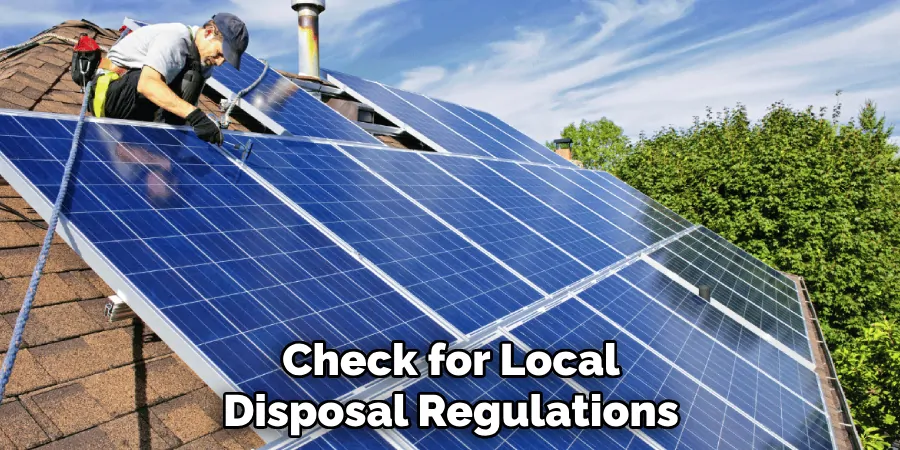
Frequently Asked Questions
Q1: Can I Recycle the Batteries From My Solar Lights?
A1: Yes, you can recycle rechargeable batteries from your solar lights. Contact your local waste management facility for proper disposal instructions or see if they have a battery recycling program in place. It’s essential not to throw these batteries in your regular household waste as they contain hazardous material.
Q2: Why is It Essential to Remove Hazardous Materials Before Disposing of My Solar Lights?
A2: Some solar lights may contain lead or other toxic materials that require special handling. It’s crucial to remove these hazardous materials before disposal to prevent harm to the environment and human health.
Q3: Can I Repurpose My Old Solar Lights?
A3: Yes, you can repurpose old solar lights into something new and useful. Use individual components like the solar panel or LED lights for other DIY projects, or repurpose the light’s casing for outdoor decorations or garden markers. Be creative and give your old solar lights a new life! End of Document
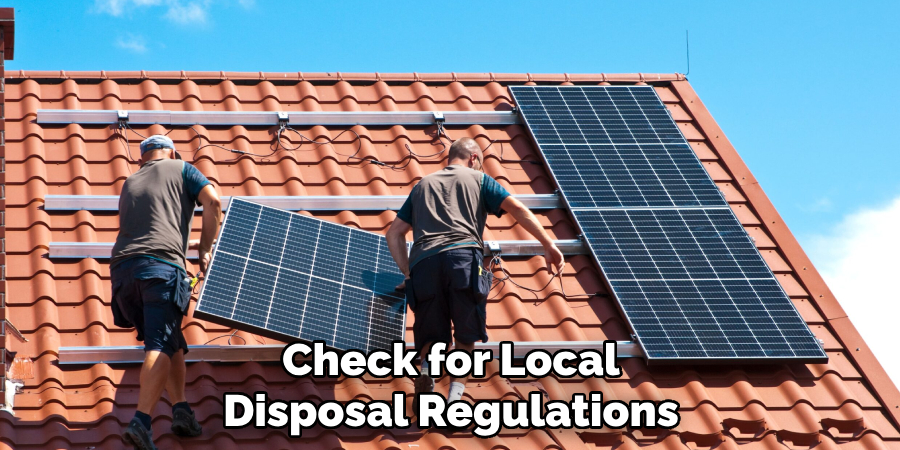
Q4: Can I Donate My Old Solar Lights?
A4: Yes, if your solar lights are still in good condition, you can donate them instead of throwing them away. Many organizations and charities accept working solar lights for use in various projects and communities with limited access to electricity. It’s a great way to give back and help others while also reducing waste.
Conclusion
That’s everything you need to know about disposing of solar lights. It’s important to remember that the most environmentally friendly option for discarding an old solar light is to reuse or repurpose it, or even donate it. Just be sure that any materials recovered during this task are separated and disposed of safely. Doing so will help minimize our collective impact on the environment.
Keeping these tips on how to dispose of solar lights in mind can also help reduce the amount of hazardous waste generated at home, and ultimately ensure solar lights don’t end up in landfills or lakes and rivers where they could cause harm to the creatures living in them. So the next time your old solar lights reach the end of their life span, remember to handle them responsibly and recycle them!

